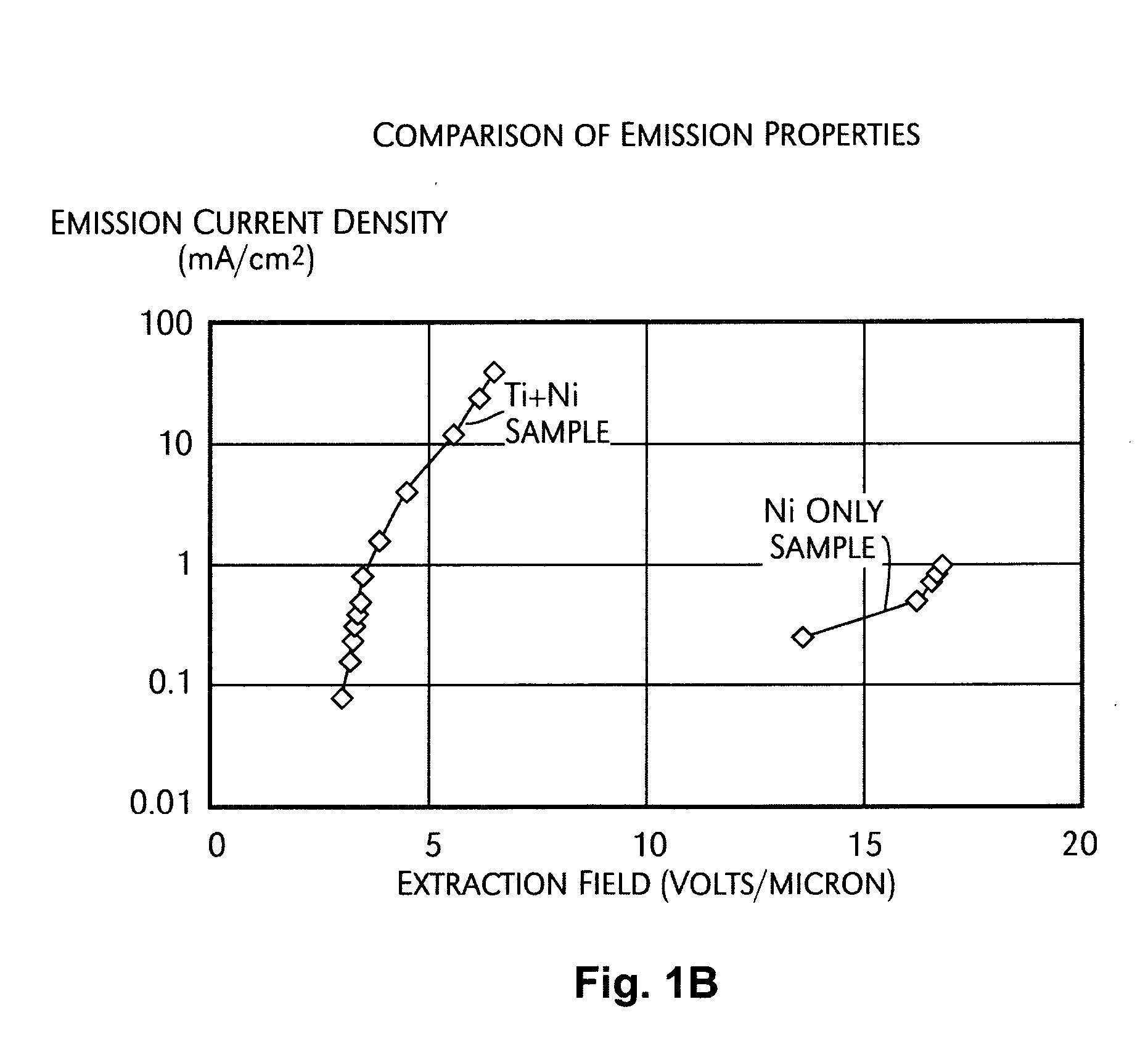Nanotubes cold cathode
- Summary
- Abstract
- Description
- Claims
- Application Information
AI Technical Summary
Benefits of technology
Problems solved by technology
Method used
Image
Examples
Embodiment Construction
Overview
[0017] The present invention addresses the foregoing problems. The present invention demonstrates a carbon nanotube field emitter that is grown by thermal CVD using a Ni catalytic film that was deposited on an adhesion layer of Ti between the Ni film and the forsterite ceramic substrate. Several experiments were tried in which two samples were placed side by side in a thermal CVD reactor. Hydrogen (H2) and ethylene (C2H4) were used in the reactor to form the carbon film. On one substrate, a 1000 A layer of Ni was deposited directly onto clean forsterite (a ceramic material). On the other substrate, 1000 A of titanium (Ti) was deposited directly on the clean forsterite surface and then 1000 A of Ni was deposited on top of the Ti layer. The Ni was deposited by e-beam evaporation in the same deposition run for each substrate, so the Ni layer thickness is identical. Thus, since they were run side-by-side in the reactor and the only substrate fabrication difference was that one...
PUM
 Login to View More
Login to View More Abstract
Description
Claims
Application Information
 Login to View More
Login to View More - R&D
- Intellectual Property
- Life Sciences
- Materials
- Tech Scout
- Unparalleled Data Quality
- Higher Quality Content
- 60% Fewer Hallucinations
Browse by: Latest US Patents, China's latest patents, Technical Efficacy Thesaurus, Application Domain, Technology Topic, Popular Technical Reports.
© 2025 PatSnap. All rights reserved.Legal|Privacy policy|Modern Slavery Act Transparency Statement|Sitemap|About US| Contact US: help@patsnap.com



